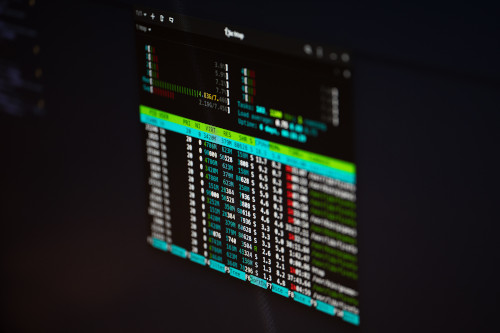Simple Usual Commands
Every day we learn commands that allow us to perform certain tasks at work, so as not to forget any of these commands that served, create a list as a memory aid.

Check OS Install Date
1# First option
2$ ls -lct /etc | tail -1 | awk '{print $6, $7, $8}'
3# Second option
4$ ls -lct --time-style=+"%d-%m-%Y %H:%M:%S" /etc | tail -1 | awk '{print $6, $7, $8}'
5# Simple Option
6$ ls -lAhF /etc/hostname
Identify the Name of a Service Based on the Port
1# We identify the process ID
2$ fuser -n tcp 7070
3# We look for the process name based on the ID
4$ ps aux | grep ID_PROCESS
Identificar Detalle de Hardware
1$ inxi -Fxz
2# Common: lsblk, lsusb, lsscsi, lspci, lscpu
3$ hwinfo --short
4$ free -m
5$ cat /proc/partitions
6$ sudo hdparm -i /dev/sda # Can change sda
7$ ls /sys/class/net/
8$ ls /sys/class/net/enp0s25 # You can change enp0s25
9$ cat /sys/class/net/enp0s25/carrier
10$ cat /sys/class/net/enp0s25/operstate
11$ lspci -v | grep "VGA" -A 12
12$ df -h
13$ pydf
14$ sudo fdisk -l
15$ mount | column -t
16$ cat /proc/cpuinfo
17$ cat /proc/meminfo
18$ cat /proc/scsi/scsi
19$ cat /proc/version
List Open Ports
1# With netstat
2$ netstat -vatn # netstat -tlpn
3# With ss
4$ ss -tlpn
For Debian OS and Derivatives, Language and Time Zone Settings
1# vim /etc/environment
2LC_ALL="es_BO.UTF-8"
3# Timezone configuration
4$ timedatectl set-timezone America/La_Paz
DNF Commands Tested on Fedora
1# Remove Old Fedora Kernel:
2$ dnf remove $(dnf repoquery --installonly --latest-limit=-2 -q)
3
4# Remove Old CentOS Kernel:
5$ package-cleanup --oldkernels --count=2
6
7# RPM Commands:
8$ rpm -qa kernel\* | sort -V
9
10# Configuration file:
11## You must edit the /etc/yum.conf file for CentOS and /etc/dnf/dnf.conf
12## for Fedora and set installonly_limit:
13$ installonly_limit=2
14
15# Regenerate Kernel Modules
16$ dracut --regenerate-all --force
Gnome Settings with Gsettings
1# Gnome Shell Customization to normal:
2$ gsettings set org.gnome.shell.extensions.dash-to-dock extend-height false
3$ gsettings set org.gnome.shell.extensions.dash-to-dock transparency-mode 'FIXED'
4$ gsettings set org.gnome.shell.extensions.dash-to-dock background-opacity 0.0
SSH Commands
1# SSH Tunneling
2$ ssh -L 2228:hostname.IP_DOMAIN_PUBLIC:22 user@IP_DOMAIN_PRIVATE
3$ ssh -f user@IP_DOMAIN_PRIVATE -L 2229:hostname.IP_DOMAIN_PRIVATE:22 -N
4$ ssh -L 2229:hostname.IP_DOMAIN_PUBLIC:22 user@IP_DOMAIN_PRIVATE
5
6# Examples
7$ ssh -i .ssh/PUB_KEY -f user@IP_DOMAIN_PUBLIC -L 2228:IP_DOMAIN_PRIVATE:22 -N
8$ ssh -i .ssh/PUB_KEY user@localhost -p2228
9
10# SSH Agent TTY
11$ eval $(ssh-agent -s)
12$ ssh-add ~/.ssh/name_priv_key
13
14# List of users with accepted SSH Login
15$ sudo cat /var/log/auth* | grep Accepted
Useful Commands
1# OpenWRT Package Manager
2$ opkg list-upgradable | cut -f 1 -d ' ' | xargs opkg upgrade
3
4# Update font cache
5$ fc-cache -f -v
6
7# Remount Linux Device
8$ mount -o remount,rw -t ext4 /dev/sdb /media/device
9
10# Set all subfolders of a folder to 755:
11$ find . -type d -exec chmod 755 {} \;
12
13# All files to 644:
14$ find . -type f -exec chmod 644 {} \;
15
16# Set only files ending with .php to 644:
17$ find . -name \*\.php -exec chmod 644 {} \;
SELinux and Firewall CMD
1$ journalctl -t setroubleshoot
2$ dmesg | grep -i -e tipo = 1300 -e tipo = 1400
3$ semodule -DB
4$ emodule -B
5$ sealert -l "*"
6
7# NGINX - Selinux
8$ ps auZ | grep nginx
9$ semanage permissive -a httpd_t (SELinux Disable Temporary)
10$ sudo chcon -R -t httpd_sys_content_t /var/www/html
11$ sudo chcon -R -t httpd_sys_rw_content_t /var/www/html
12
13# Firewall
14$ sudo firewall-cmd --permanent --zone=public --add-service=http
15$ sudo firewall-cmd --permanent --zone=public --add-service=https
16$ sudo firewall-cmd --reload
Popup in Terminal for Shellscript
1$ whiptail --yesno "Did you already know whiptail?" 40 150
Delete File with No Possibility to Recover
1$ shred -u file.txt
MOC Configuration on Fedora
1# vim ~/.moc/config
2TiMidity_Config = /etc/timidity.cfg
3Theme = transparent-background
4XTermTheme = transparent-background
5# Privilegios
6$ chmod 644 config
Create file with CAT
1$ cat <<EOF >> shell.sh
2#!/bin/bash
3echo "Template"
4sed -e
5df -h
6EOF
Disable Cloud Init on Ubuntu Server
1# First option
2$ sudo touch /etc/cloud/cloud-init.disabled
3$ sudo vim /etc/cloud/cloud-init.disabled
4cloud-init=disabled
5# Second option
6$ sudo systemctl disable cloud-init.service
7$ sudo systemctl stop cloud-init.service